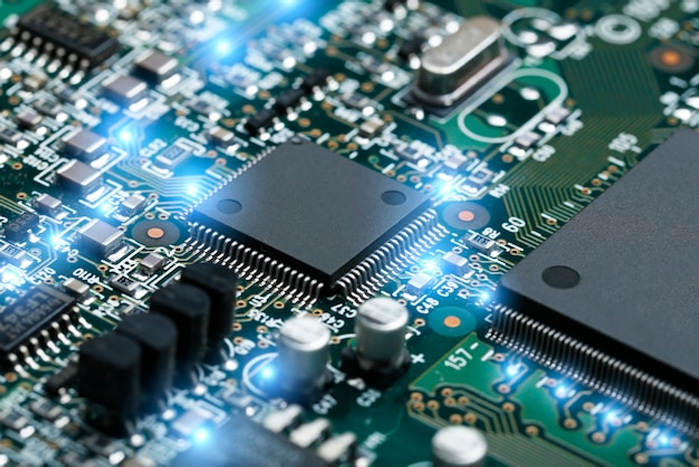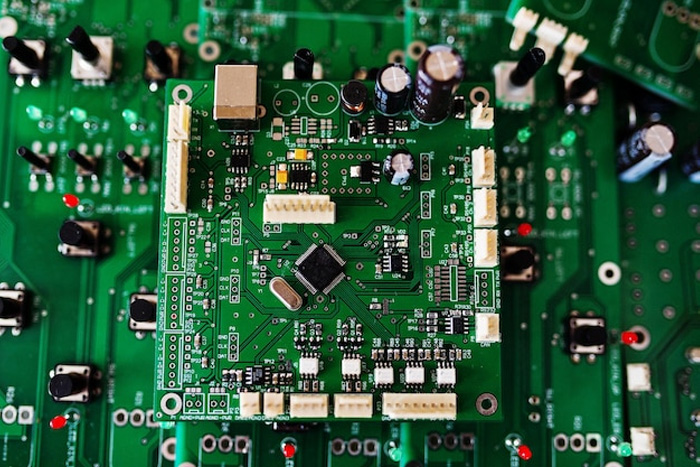LCD (Liquid Crystal Display) is a common display technology in modern electronic devices, widely used in televisions, computer monitors, smartphones, and other devices. However, in our daily use, have we ever wondered whether all LCD controller boards are the same? The answer is clearly no. This article will discuss the differences in LCD controller boards and why each board requires specific firmware to work with different LCD panels.

Firstly, it's essential to understand the crucial role of LCD controller boards in LCD displays. This seemingly small and inconspicuous circuit board is the key component responsible for converting image and video signals into the images we see on the screen. LCD panels themselves consist of millions of pixels, each with varying colors and brightness levels. It's the controller board's guidance that lights up these pixels in a specific way to present a clear image.
Despite the similarity in the basic principles of LCD technology, there are significant differences in LCD controller boards across various devices and manufacturers. These differences primarily include the following aspects:
Panel Types and Specifications: Different LCD panels have varying specifications and features, such as resolution, size, pixel density, brightness, and contrast. Therefore, each controller board must match the specific specifications of the LCD panel to ensure optimal image quality.
LVDS Interface: LVDS (Low Voltage Differential Signal) is a widely used data transmission standard for LCD panels. However, different brands and models of LCD panels may utilize different LVDS interfaces. Consequently, each LCD controller board needs to be equipped with a specific LVDS interface compatible with the connected LCD panel. This means that the layout and electrical characteristics of LVDS pins may vary depending on the LCD panel.
Panel Power Requirements: Different LCD panels may require varying voltage and current levels for driving pixels and backlighting. As a result, LCD controller boards must provide the appropriate power specifications to ensure the LCD panel operates correctly.
Specific Features and Characteristics: Some LCD controller boards may offer specific features and characteristics, such as touchscreen support, color calibration, multi-screen support, etc. These features can also vary based on the manufacturer and model.
To ensure that LCD controller boards can work in harmony with specific LCD panels, each controller board needs to be equipped with custom firmware. Firmware is a software program embedded on the controller board responsible for configuring its functions and ensuring compatibility with a particular LCD panel.
The importance of firmware lies in its inclusion of crucial information needed for communication and control with the LCD panel. This information includes LVDS interface configuration, resolution settings, color calibration, power specifications, and more. This information is customized based on the characteristics and specifications of the LCD panel, making generic firmware unsuitable for this task.
Through custom firmware, manufacturers can ensure that their LCD controller boards are a perfect match for the LCD panels they produce. This not only contributes to providing the best image quality but also guarantees the stability and performance of the LCD panel.

The LVDS interface is one of the most critical components of an LCD controller board. LVDS is a digital signal transmission standard used to transmit image and video data from the controller board to the LCD panel. However, different LCD panels may use different types of LVDS interfaces, contributing to the diversity of LCD controller boards.
Various LVDS interfaces can have different numbers of pins, varying pin layouts, and distinct electrical characteristics. Therefore, the controller board's LVDS interface must perfectly match the LVDS interface of the LCD panel to ensure that data can be correctly transmitted and displayed on the screen.
These differences encompass not only the physical characteristics of the LVDS interface but also the protocol and data rate of LVDS signals. Different types of lcd panels may require specific protocols and data rates to function correctly, and this information must be included in the firmware of the controller board.
Another crucial aspect is the power requirements of LCD panels. Different LCD panels may require varying voltage and current levels to drive pixels and backlighting. Consequently, LCD controller boards must provide the appropriate power specifications to ensure the LCD panel operates correctly.
Some LCD controller boards offer adjustable power outputs, which can be configured based on the requirements of the connected LCD panel. However, this still requires the correct firmware to ensure that the power supply aligns with the LCD panel's specifications.
In addition to basic functionality, some LCD controller boards support specific features and characteristics, such as:
1.Touchscreen Support: Some LCD controller boards come with touchscreen control functionality, allowing users to interact with the display through touch. This requires additional hardware and firmware support.
2.Color Calibration: Some LCD controller boards support color calibration to ensure accurate color representation, which is particularly important in professional applications.
3.Multi-Screen Support: Certain controller boards allow the connection of multiple LCD panels to create large-screen displays. This requires specific hardware and firmware support.
These additional features are typically used in conjunction with specific LCD panels and, therefore, require customized firmware support. While LCD technology is widely used across various devices, LCD controller boards are not all the same. They differ in terms of panel types, LVDS interfaces, power specifications, and specific features. To ensure that LCD controller boards work in harmony with LCD panels, manufacturers need to provide customized firmware for each controller board to meet the requirements of different LCD panels.
This diversity reflects the versatility and flexibility of LCD technology, enabling manufacturers to customize LCD controller boards according to the needs of various applications. Therefore, while LCD controller boards may appear similar, their customizability and adaptability allow them to perform at their best in different applications, delivering excellent image quality and user experiences. So, the answer is a resounding "no" – LCD controller boards are not all the same, as they exhibit significant differences in many aspects, all designed to meet the varying demands of different LCD panels.
